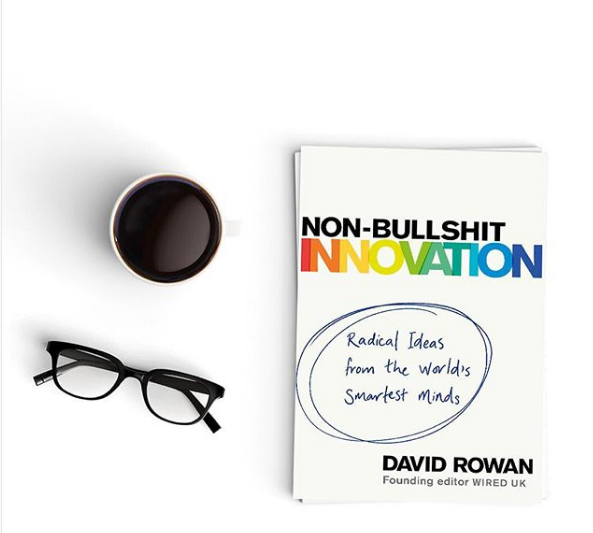
David Rowan, author of Non-Bullshit Innovation, travels the globe in search of the most exciting and pioneering startups building the future.
He’s got to know the founders of WhatsApp, LinkedIn, Google, Spotify, Xiaomi, Didi, Nest, Twitter and countless other ambitious entrepreneurs disrupting businesses in almost every sector. And yet too often the companies they’re disrupting don’t get it. They think they can innovate through jargon: with talk of change agents and co-creation gurus, ideas portals and webinars, make-a-thons and hackfests, paradigm shifts and pilgrimages to Silicon Valley. But during this quest he’s also discovered some genuinely exciting and transformative approaches to innovation, both in start-ups and in established corporations that have re-invented themselves as radically as any start-up to stay relevant in a changing world.
Read to know about eight of the most transformative approaches to innovating in ‘disruptive’ startups and use these radical ideas to adapt and thrive in the digital age!
Embrace unmet needs—move ahead of your rivals by identifying and fulfilling customers’ needs to create or sustain relevance.
“True innovators scent opportunity when emerging technologies or changing economic circumstances generate new customer needs that the market has yet to meet. Moore’s law slashed the cost of digital storage, just as the exponential growth in smartphones allowed universal cross-device messaging, yet it took breakout startups such as Dropbox, Spotify and Whatsapp to understand that the true unmet consumer need was simplicity of use and reliability. Incumbent businesses can similarly build a protective moat around themselves by moving more quickly than rivals in identifying and fulfilling evolving needs.”
Empower your team to create an innovation-centric, healthy and creative working culture that relies on trust and sustains self-motivated employees.
“The best talents seek workplaces which offer the opportunity to do the best work and to grow in the process. Daniel Pink’s 2009 book Drive, which evaluated the behavioural studies of employee motivation concluded, that salary and status are less effective motivators than autonomy(the freedom to work in self-directed ways), mastery (the opportunity to improve skills) and purpose (the wish to be part of something meaningful).”
Turn products into services and launch profitable and sustainable new business lines that respond to customers changing needs.
“Design experiences, services and systems that will enhance customers’ trust in you. Prototype new products and services, using agile and experimental working methods. Study agile development methods and measure customers’ responses to early iterations before investing more. Study how emerging technologies such as artificial intelligence or blockchain could enable new revenue models.”
Enable ‘moonshots’-like Googles’ Astro Teller- to create a space where high-risk long term projects can be quickly developed and evaluated for efficiency.
“His[Astro Teller] job is to foster a culture that allows anyone to suggest a project, no matter how off the wall and that evaluates these ideas in unbiased ways in order to turn the best efficiently into commercial applications. He doesn’t want to be the filter, it’s far more scientific to rely on dispassionate methodologies to assess proposals and then throw them into the waste bin for the right reasons. That means encouraging staff to propose audacious missions and get passionately behind them, but also to be cool-headed enough to know when to quit.”
Incubate tomorrow’s business by partnering with exciting new startups –reengineering your organization around collaboration rather than attempting to build internal capabilities.
“It’s always tough for an established, management layered organization to move with the agility and risk appetite of an early-stage technology startup. So partnering with startups can be an effective way to adapt the core business to embrace fresh thinking and new commercial models. As we’ve seen, approaches to startups can include funding, co-locating, acquiring, partnering with or even building them.”
Mine the data! For years we’ve been hearing about the exponential growth of big data, even traditional businesses can effectively launch new data -led business lines.
“Creative uses of data analytics are enabling all sorts of new commercial opportunities. A business that can access a reliable data stream and process it to enable better decision-making can generate remarkable new value. Take data from satellites, access to which is falling in price as venture-funded startups build constellations of nano-satellites scanning the Earth in real time.”
Reframe your value-remain relevant by reevaluating how your core strength can extend to new sectors-like Qantas that has extended its loyalty programme to diverse fields like insurance and credit cards.
“Understand what your customers want: ask them, test them, use ethnography, but always begin with their needs. Define your unfair advantage. It may be trust or a particular expertise. What could there be along your company’s entire value chain that could be exploited in new ways that benefit customers. How can you build new business lines that profit from these moats?”
Leverage and master emerging technology and experiment with its potential to refine business models, customer offerings and strategies.
“Exponential technologies, from artificial intelligence to quantum computing to autonomous transport, are clearly going to overturn a bunch of today’s business models and create new winners. Yet, that’s not going to happen according to predictable timescales or when you feel ready to exploit them. An early mover can secure intellectual property protection on specific-use cases for emerging technologies.“
In Non- Bullshit Innovation , Rowan gives readers looking to apply these approaches immediately in their own businesses some practical takeaways. This book is available now!









